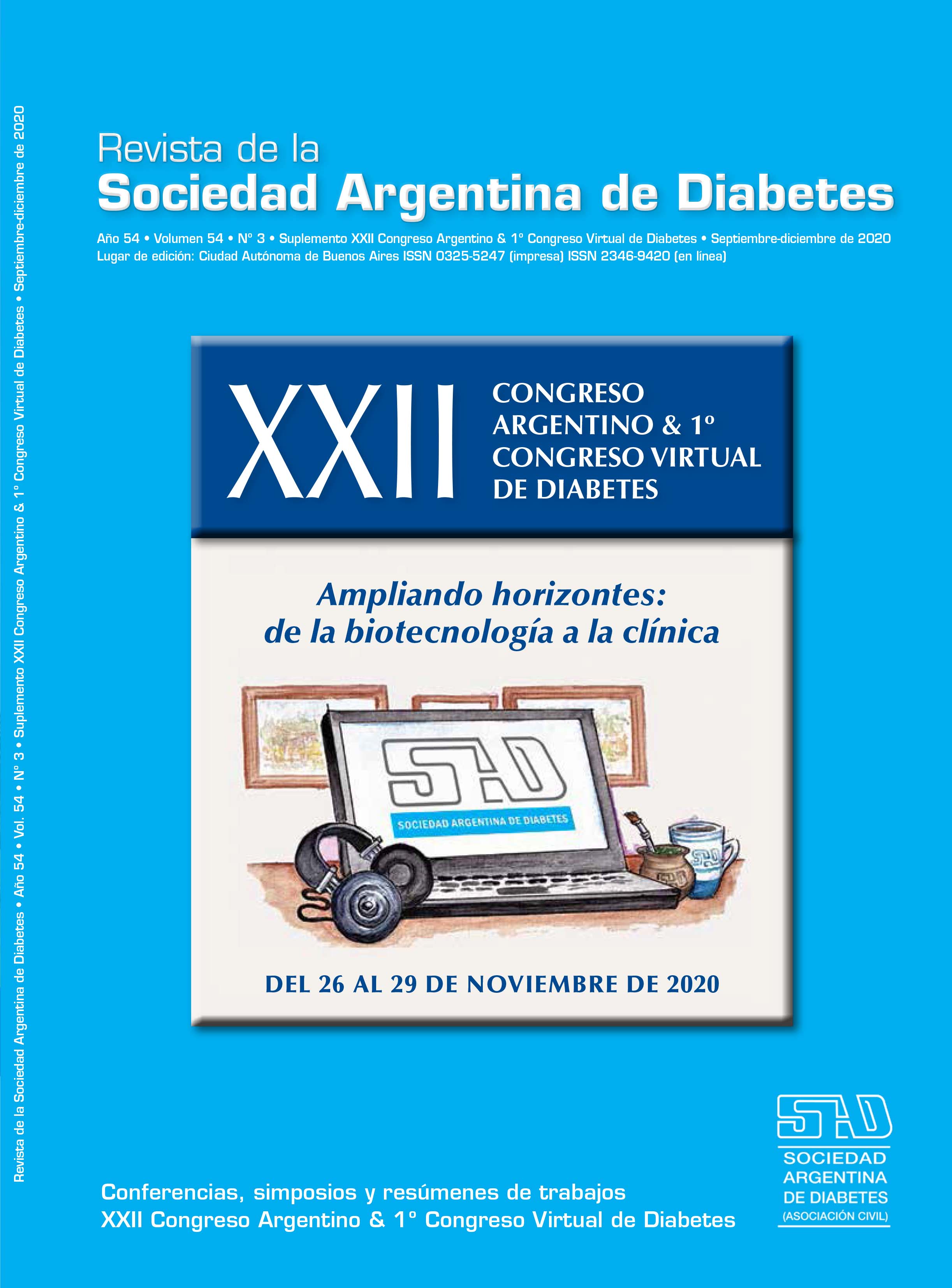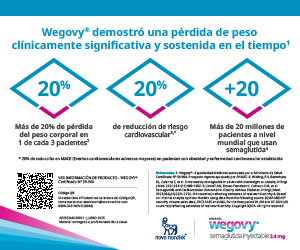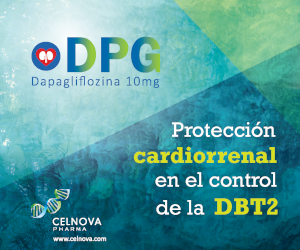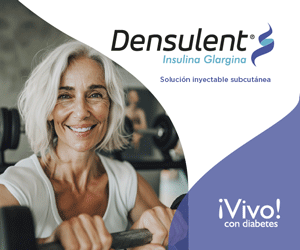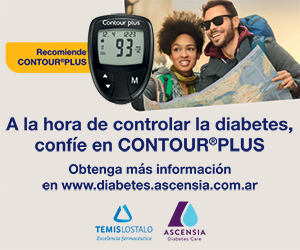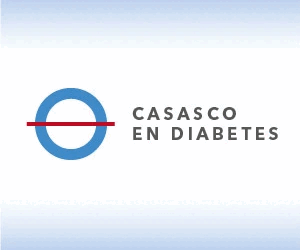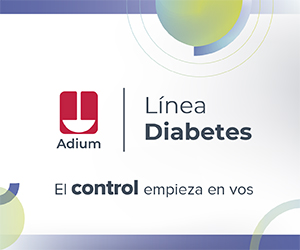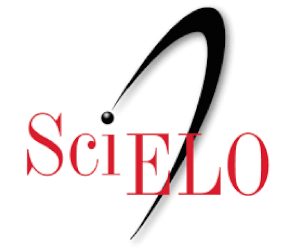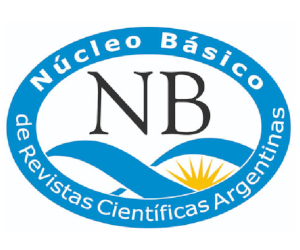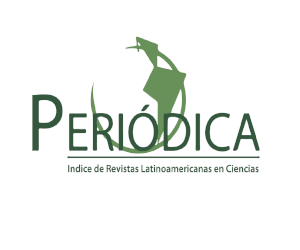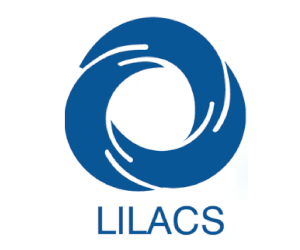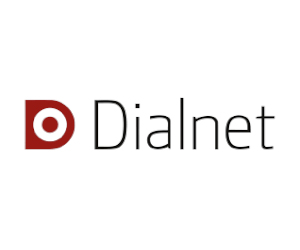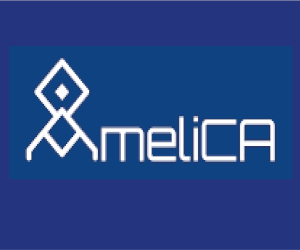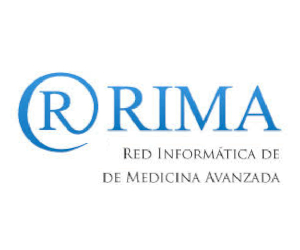O15 Insulin therapy in type 2 diabetes. how do specialists insulinize?
DOI:
https://doi.org/10.47196/diab.v54i3Sup.376Keywords:
insulintherapy, type 2 diabetes, argentineAbstract
Introduction: Insulin therapy is an effective tool to achieve the glycemic goal (A1c). The percentage of people with T2D treated with insulin and the regimens used vary by country.
Aim: To identify the frequency, types and schemes of insulin therapy in the treatment of type 2 diabetes in Argentina.
Material and methods: Descriptive, observational cross-sectional study in people with T2D in 28 centers treated by specialists in Argentina (FRADYC III Group) year 2018. It was evaluated: clinical examination, laboratory and treatment in routine practice. Univariate analysis and multiple logistic regression were performed, any value of p<0,05 (2 tails) was considered significant with the STATA Intercooler Software.
Results: In 1329 T2D persons, aged 61.7 ± 11.6 ys, years of T2D diagnosis 9.6 ± 7.4 ys, A1c 7 ± 1.4%, FPG: 135 ± 40,4 mg/dl, BMI: 31.7 ± 5.7 kg/m2, with ±arterial hypertension 81%, dyslipidemia 81.4%, self-monitored blood glucose 76%, with cardiovascular disease 37.2%, neuropathy 19.1%, nephropathy 12.64%, retinopathy 10%. Rates of mild/moderate hypoglycemia in last week was 4.3% and of severe hypoglycemia last year was 0.38%. Were treated with insulin 38.1%, of which in 63.8% insulin was combined with oral antihyperglycemic agents and/or GLP-1 analogs. Insulin therapy start time: 8 years. Self-monitoring of blood glucose 90.9%. Insulin regimens: Basal 65.1%, Basal-Bolus 30.7%, Premixes 4.2%. Types of insulin and average dose: NPH in 58.7% (40.0 ± 27.3 U/day), Glargine U-100 25.2% (37.9 ± 18.8 U/day), Detemir 6.5% (40.5 ± 23.9 U/day), Degludec 3.5% (38.1 ± 19.9 U/day), Glargina U-300 1,8% (62.9 ± 31.6 U/day), Premixes 4.2%. Regular 3% (14.9 ± 12.0 U/day), Lispro U-100 3.5% (14.0 ± 6.2 U/day), Aspart 18.7% (13.6 ± 8.7 U/day), Glulisine 5.5% (15.7 ± 13.6 U/day). Insulinized T2D persons versus non insulinized persons had worst A1c (8.06 ± 1.7 vs 6.86 ± 1.1% (p<0.0001) and higher frequency of mild/moderate hypoglycemia in the last week 12.68% vs 1.36% (p< 0.0001), without differences in severe hypoglycemia in the
last year. Insulin start time was associated with: younger age (OR: 0.94, p<0.0001), male gender (OR:1.33, p<0.029), longer time from diagnosis (OR: 1.11, p<0.001), having arterial hypertension (OR: 1.99, p<0.001), retinopathy (OR:3, p<0.001), and neuropathy (OR:2, p< 0.001).
Conclusions: Received insulin 38.1%, 63.8% in combination with other antihyperglycemic agents. NPH insulin was the most utilized, followed by Glargine U100. Insulin treated T2D persons had worse A1c and more mild/moderate hypoglycemia. Insulin therapy start time was associated with younger age, male gender, longer time from diagnosis, worst A1c, arterial hypertension, retinopathy and neuropathy.
Downloads
Published
Issue
Section
License

This work is licensed under a Creative Commons Attribution-NonCommercial-NoDerivatives 4.0 International License.
Dirección Nacional de Derecho de Autor, Exp. N° 5.333.129. Instituto Nacional de la Propiedad Industrial, Marca «Revista de la Sociedad Argentina de Diabetes - Asociación Civil» N° de concesión 2.605.405 y N° de disposición 1.404/13.
La Revista de la SAD está licenciada bajo Licencia Creative Commons Atribución – No Comercial – Sin Obra Derivada 4.0 Internacional.
Por otra parte, la Revista SAD permite que los autores mantengan los derechos de autor sin restricciones.



